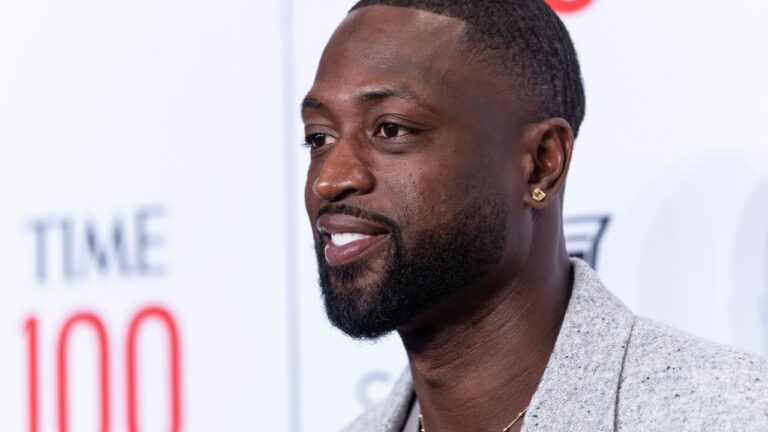24 Tips for Spotting Fake News

Despite the number of people yelling about fake news, not many actually know how to spot misinformation — especially on social media.
While it might seem trivial, fake news undermines arguments and stalls societal progress. The rise of internet news has intensified this issue, fostering deeper ideological divisions, as highlighted by a Boston University report.
To combat the growing tide of fake news, effective strategies are vital. Learning how to spot misinformation is the first step to arming yourself against bad actors on the internet.
1. Watching for Bias by Omission

Omission bias in a legal context might involve a passer-by not aiding a person in physical distress who comes to harm. While the non-Samaritan didn’t contribute to the victim’s plight, a jury would need to decide if their negligence was a factor. This notion can be applied to the news media, which neglects important events.
One example is the Convention of States Article V, now legislated in 19 states and gaining traction in many others. The convention would propose a severe reduction in federal spending and power, and 34 states need to adopt legislation before any constitutional amendments are proposed. One would think such key political action would make front-page news, but who can remember even a headline?
2. Reading Between the AI Lines

We are moving into unnerving territory, driven by rampant growth in consumer technology and its subsequent fallout. One such symptom is the rising use of artificial intelligence (AI) in social media and even journalism. As we have seen with the recent Google Gemini rollout, AI is not a reliable image source. Maybe we can apply this to the technology’s grasp on truth.
AI’s susceptibility to political manipulation or engineering means a balanced, unbiased account of events is unlikely. Furthermore, some news sites might rely on AI-generated content, which is edited and embellished by poor humans who once dreamed of a journalism career.
3. Gaslight Detection

The key to detecting mistruths comes with a healthy understanding of gaslighting, described in Merriam-Webster as subjecting a person to psychological manipulation “so that the victim questions the validity of their own thoughts, perception of reality, or memories and experiences confusion, loss of confidence and self-esteem.”
Of course, gaslighting is fungible — we see it in relationships, business transactions, and political campaigns, among other scenarios. However, when news anchors push a certain opinion (for example, stating that one political candidate is a bad human being), even when they know it isn’t the full picture, they are gaslighting us.
4. Checking for Spin

If gaslighting is the news media’s equivalent of the “This is fine!” meme (taken from cartoonist KC Green’s Gunshow Comic strip), spin would be like telling us that the fire was started by a “them.” Spin takes one side of an event; while it may report the entire event, it will choose a side.
Sadly, spin is a propaganda weapon that can result in the unfavorable treatment of an apparent opposing demographic. For example, the George Floyd protests in 2020 provoked several key events presented from opposing perspectives to serve a narrative. The demonstrators and their champions treated all dissenters unfavorably, while many opponents saw all the protestors as entirely wrong. In other words, a fringe minority of bad actors created a toxic narrative, which competing pundits capitalized upon.
5. Looking for Unsubstantiated Claims

One of the hardest and simplest methods for preventing fake news attacks is ensuring that news reporters’ claims are true. The good news is that understanding a news story’s context takes a few minutes of research (using reputable sources, of course), giving valuable insight into gauging plausibility.
However, the bad news is you must apply this to several news stories daily if you wish to keep on top of current affairs. Who wants to fact-check everything they hear or read in the news? Nobody, this is a problem.
Before you say, “What about Snopes?” you may want to fact-check the fact-checkers. In 2021, Buzzfeed News reported Snopes’ co-founder David Mikkelson had plagiarized others’ work for dozens of pieces he wrote under a pseudonym. Snopes disavowed his behavior, though it somewhat undermined the site’s mission statement.
6. Listening for the Call to Authority

A call to authority is a tenuous concept. On the one hand, knowledge of a subject is a prerequisite for understanding it better, hence the need for experts. On the other hand, human beings aren’t flawless — as much as some might disagree. The call to authority is vulnerable to abuse, which can weaken a position.
One might even consider misuse of this practice a trope: the leather-elbow-padded professor is losing an argument, resorting to an attack on his debating rival and questioning their “authority” on the subject.
7. Sensationalize This!

Print news publications have been on managed decline, with readership falling exponentially since the new millennium. A 2020 Press Gazette report shows the fall in the United Kingdom newspaper industry, with the Daily Mail‘s readership down from 2.35 million in 2000 to only 0.9 million readers two decades later.
American tabloids like the National Enquirer, the Daily News, and the New York Post still rely on front-page sensationalism, which might be the easiest (and blatant) route to identifying fake news. Sensational news media still has a place; who doesn’t love headlines like this one from the New York Post: “My Kids Are Addicted to Caviar — I Might Need to Get a Second Job.”
8. Opinions Dressed as Facts

Many commentators (including the conservative talking head and podcaster Ben Shapiro) like the “facts don’t care about your feelings” mantra, which refers to the notion that there is no such thing as “your truth.” There is only “the” truth, regardless of how you might see it.
When news pundits discuss their anecdotes in relation to a much bigger issue, it usually means the facts are being obscured, distracting from the collective reality. While personal anecdotes are informative, they might present an outlier’s perspective.
9. Taking Cover From Mudslinging

Talented firebrand and late polemicist Christopher Hitchens was always entertaining in news interviews and political debates before he died in 2011. He championed ad hominem discourse, though that was his job; however, there are few stronger indicators of news bias than a reporter hurling insults at their guest or interviewee.
Brazen attacks on news segment interviewees are rare and more likely to involve a passive-aggressive or loaded questioning style. Amusingly, mudslinging sometimes creeps into news networks’ inner circles, as demonstrated in this hilarious Fox 5 New York clip from 2014, when an anchor sparred with his live reporter.
10. Are They Mind Readers?

The art of mind reading is often associated with the paranormal, but it also occurs in the news. Also known as the strawman fallacy, this technique involves taking what someone has said and ascribing false motivation to suit a narrative — there is no upside to it.
All too often, this spinning technique can be used to gain political ground on an opponent or a movement. One example is using hyperbole: right-leaning newsgroups say that Alexandria Ocasio Cortez’s Green New Deal received widespread criticism. Some pundits panned the deal, while others praised it. Usually, strawman claims come with no evidence or use out-of-context quotes to perpetuate the angle.
11. Knowing Rhetorical Persuasion

Any student of propaganda will attest that rhetorical persuasion is key to unpacking a text’s purpose. Therefore, understanding the difference between Aristotle’s three pillars of persuasion– pathos, logos, and ethos- will benefit anybody who is wary of fake news. However, it is surprising how some educated people don’t know what they are.
Aristotle’s thinking on rhetoric considers the idea that there are three main persuading factors that are essential to presenting a message. Pathos taps into our emotional state; ethos appeals to our sense of morality; logos promotes the application of logic. A journalism purist could argue logos is the only acceptable rhetoric in news reporting. Once you detect ethos or pathos in any news article or segment, the plausibility is in question.
12. Seeing Which Way It Slants

Slant in news coverage is nothing new, though lately, it may have dire consequences. Worryingly, the two fringes on the American political spectrum — the far left and the far right — are unpredictable entities, often triggered by national political events, so how they are reported is important.
An example of cherry-picking was how two disparate media platforms reported that President Trump attended the Davos World Economic Forum in 2020. CNBC’s headline revealed that Trump planned to attend the event, having skipped it the previous year, though his attitude to any global strategy made it a moot point anyway.
The more balanced AP News wrote, “Trump to attend an annual economic forum in Davos, Switzerland.”
13. Recognizing Flawed Logic

It isn’t easy to ascertain why any prime-time anchor would belittle themselves by using flawed logic in arguments, knowing how a lucrative contract might affect any human is. We can’t empathize with a news anchor until we’ve sat in their chair, but it can be jarring to watch.
One culturally relevant instance of flawed logic — or just well-hidden ignorance — was when Brandon Brown won the 2021 Talladega Superspeedway. Interviewer and NBC Sports reporter Kelli Stavast mistook the racing crowd’s expletive instructions for President Biden for the chant, “Let’s Go, Brandon!” The motto has since become a euphemistic chant at other events.
14. Interpreting Elite vs. Populist Bias

Many citizens rely on the news to keep in touch with important events and have no time or inclination for research. For independent thinkers, this can be frustrating, leading to reduced faith in news segment “experts” who surface during news cycles and pitch an overriding establishment opinion to negate popular opinion.
There have been many examples here. The mainstream news’ treatment of pandemic vaccine dissent was obvious. Moreover, during the 2016 Brexit referendum, the BBC portrayed “Leave” campaigners negatively. Nick Cohen examines the British state television network’s Brexit campaign coverage in a New York Review article.
15. Checking for Sources

Any news pundit would be well advised to cite reputable sources when pushing a story angle. The foremost call to authority is quoting the best people on the subject, lest you make your news appear fake.
Conversely, revealing sources in sensitive news stories isn’t always possible, though questions are acceptable when a secret whistleblower is too comfortable for comfort.
16. Seeing How Stories Are Placed

Do you ever get the feeling it’s all a simulation? On the one hand, you are aware of some random world news event happening — a coup d’etat or a natural disaster, for instance. Meanwhile, the national news channel is talking about Taylor Swift’s latest stage getup or a bear in someone’s backyard. Sometimes, the news doesn’t have its priorities straight.
Occasionally, news outlets let their masks slip, revealing the motive for not showing something newsworthy. While former president Donald Trump is a divisive character, MSNBC cut him off during his Super Tuesday victory speech, a decision host Rachel Maddow said she was “unhappy with.”
17. Recognizing Biased Language

There are many red flags in news journalism, whether it comes through the television, laptop, or daily newspaper. One of the brightest and easiest to detect is the subjective use of adjectives or adverbs in reporting or seeing the frames of reference the organization uses.
Some good exemplars of subjective qualifying adjective terms, also known as epithets, are easy to identify if a reporter or writer adds pejorative terms like “baseless claim” or “sinister warning,” there is likely an agenda in the reporting.
18. Searching for Photo Bias

Photo bias is the age-old tactic of manipulating photographs of a subject. This scenario could be like the trope of a scorned lover cutting an ex-flame out of a photo. However, in news media terms, this happens all the time, which is no surprise. Of course, both sides of the political aisle use this technique.
Conservative site The Blaze posted a 2019 article titled: “Appeals court rules individual mandate in Obamacare unconstitutional.” Pictured above is a photo of a gray-haired President Barack Obama with a furious face, used out of context and made as a visual reference for the story.
19. Looking for Negativity Bias

In the late 19th century, infamous media magnate William Randolph Hearst coined the phrase, “If it bleeds, it leads.” He understood that bad news sells more than good news, so this became the mantra for news reporting that still rings true today. However, there may be a medical reason for this phenomenon.
A University of Michigan study found humans have a neurological predisposition to negative news due to our physiological traits. In short, there are more perceived costs for ignoring negative information than positive information. Consequently, most news we ingest has a negative angle, which can’t be good for us.
20. Finding the Motivation

Actors are renowned for asking, “What’s my motivation?” to tap into their character and help the audience suspend disbelief. What works for good actors can also work for so-called “bad actors”—and we aren’t talking about the Razzie Awards. Bad actors appear in all walks of life, including news media.
Those with a penchant for truthfulness must look into the person giving them their news to see their motivation. Breaking Points is a political talk show garnering a balanced view from hosts Krystal Ball and Saagar Enjeti, who are liberal and conservative, respectively. However, Ball received condemnation and damaged her credibility after a report revealed how she took a sizable salary from her People’s House Project PAC while giving a tiny fraction of the proceeds to candidates.
21. Knowing Your Clickbait

Occasionally, a “news” story involves a headline that uses barely concealed foreshadowing, such as: “This chicken crossed the road…what happened when it got to the other side is wild!” This kind of story is geared toward generating ad revenue for an impatient, fast-scrolling reader, and it may not be the most factual.
Some clickbait farms or “content mills” are less focused on telling readers the truth and more interested in clicks. Even if the story is factually correct, we really need to stop falling for such cheap maneuvers — we’re better than that.
22. Watching for Sponsored Content

Okay, before we get too bogged down in online content ad revenue dynamics, full disclosure is important, and there is nothing wrong with sponsored content. Content paid for by certain interests can be informative and helpful, such as advertorial segments dedicated to visiting a certain city.
However, a news segment or report “partnered with” or “presented by” commercial interests may not have readers’ best interests at heart. To illustrate this, during the COVID-19 pandemic, several news companies received sponsorship slots from Pfizer, a big pharmaceutical company looking to profit from the crisis.
23. Leaving the Echo Chamber

As much as we don’t want to believe it, receiving news only from our social media feeds might not be healthy. A good analogy would be watching the same band whenever they visit your city. Other musical acts might pass through, but you are happy listening to the same genre year in and year out. Think of all the other acts you are missing — it may open doors to a new appreciation of other music.
Political polarization is growing in the United States, or so it might appear if viewing events from only one perspective. It takes intellectual bravery to venture over “enemy lines,” though at worst, you might find a better version of truth. Sampling news from center-right alongside center-left publications is underrated (the extreme fringes are another matter). Unsurprisingly, at least half of Americans get their news from social media, according to Pew Research Center.
24. Doing Your Research

The good news in our quest to mitigate fake news is that we have a mountain range of knowledge peaks at our disposal. Students of any subject have never had it so good, and research papers, reports, reviews, feasibility studies, legal journals, and public domain records provide endless sources to aid us.
However, the bad news is that most hard-working people don’t have time to research the validity of the claims they read. An antidote to this dilemma is to research only the stories that might impact one’s welfare. Before making choices about whom to elect, for example, a cursory look at a candidate’s personal history and career track record is favorable instead of letting Rachel Maddow, Sean Hannity, or Anderson Cooper decide for you.





